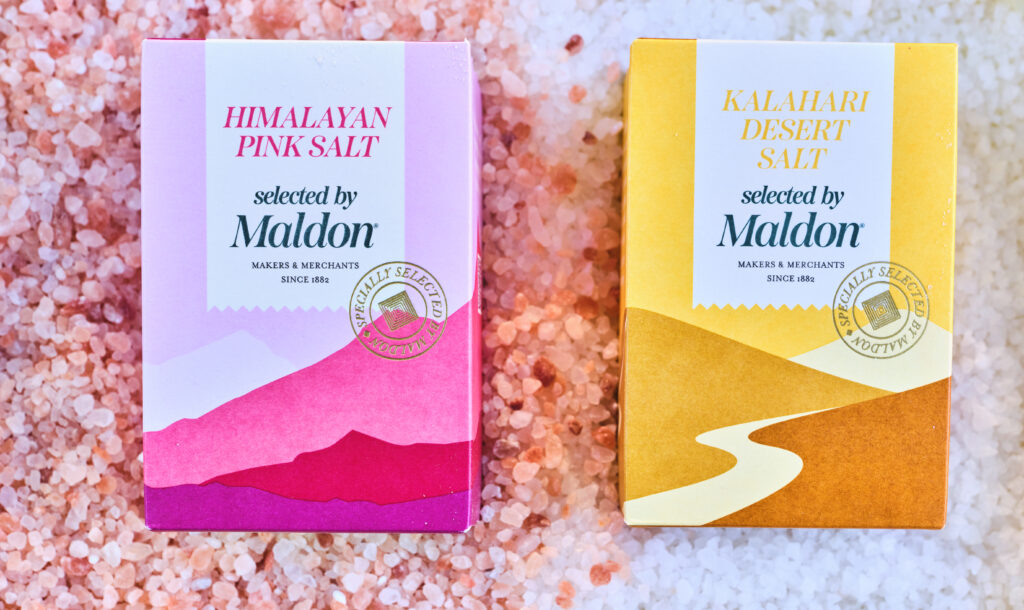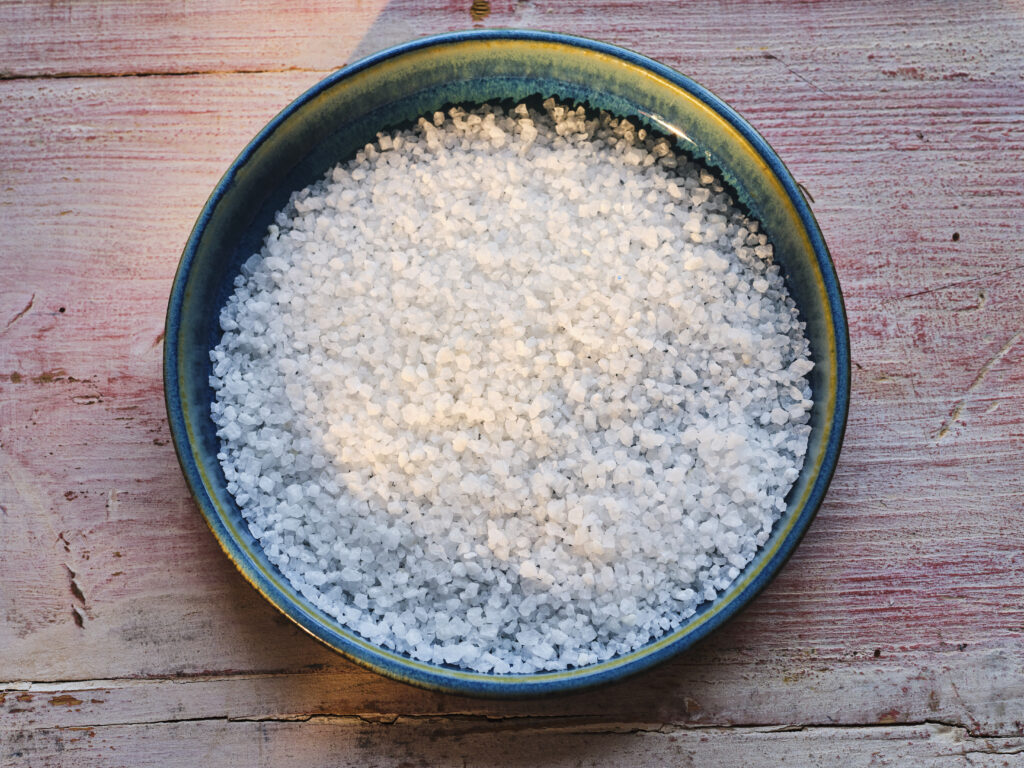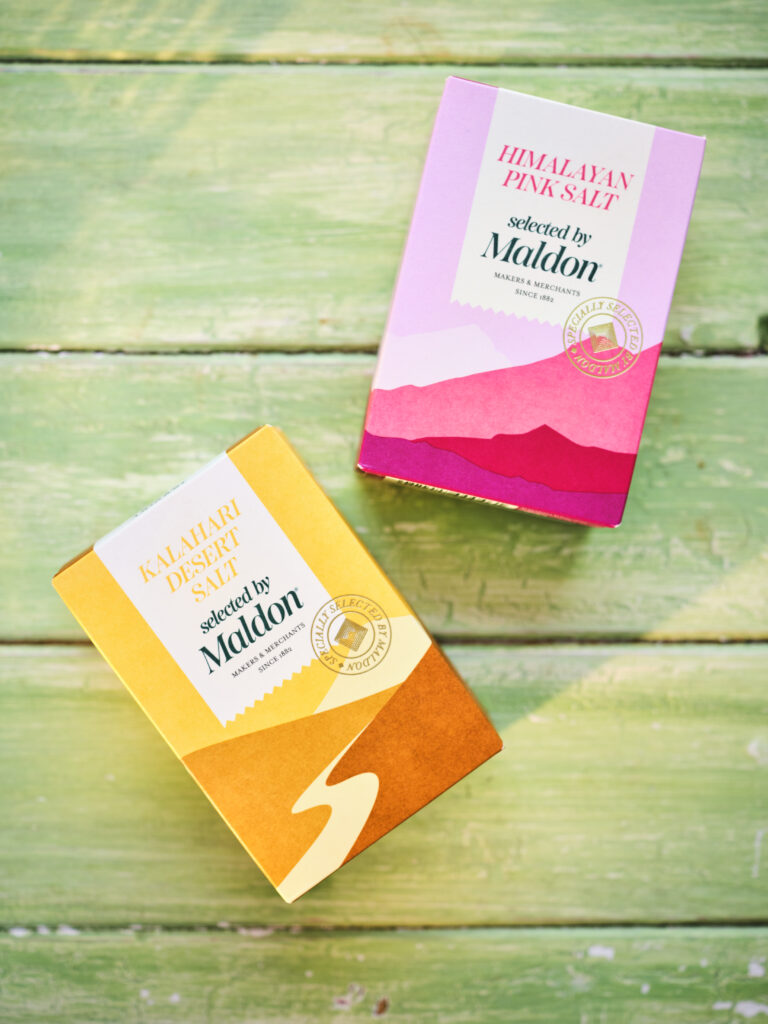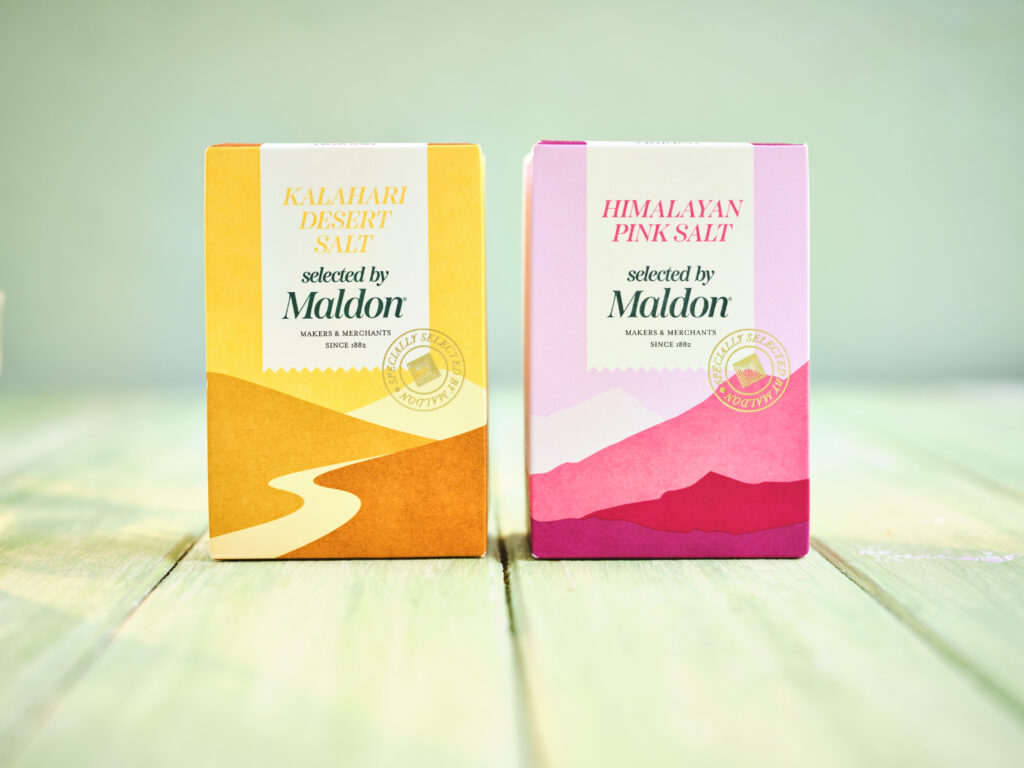
Within this article, we will be exploring the main differences between Kalahari Desert Salt and Himalayan Pink Salt, expertly selected by Maldon and part of our Merchants Range.
We’ll first take you on a journey of understanding the two salt’s varying origins; their composition, taste and other relevant factors to help provide a clear comparison of the two.
After getting to know the history behind the salts, we then demonstrate the usage, knowing which salt is better suited for a particular dish or beverage to the other.
Once we have covered off all things cooking and seasoning, we touch upon the importance of ethical sourcing of the two salts, before letting you all know where you can purchase your very own pack of our Kalahari Desert Salt and Himalayan Pink Salt, Selected by Maldon.
Kalahari Salt vs. Himalayan Salt: Comparisons
Origin
Kalahari Salt:
Firstly, Kalahari Salt is sourced from the vast desert plains of the Kalahari Desert in South Africa, where natural salt formations occur from an underground salt deposit that has existed for millions of years. It is why Kalahari translates to the phrase ‘the land without water’, as salt lakes, like Lake Makgadikgadi, that had once existed have since dried up from continuous water evaporation, leaving a salt desert in its place.
The salt is extracted from the natural underground salt deposits, where water dissolves the salt to create a brine solution. After that, it brought to the surface and then it is then dried from the sun’s rays to leave a coarse rock salt as the finished product.
Himalayan Salt:
In contrast, Himalayan Pink Salt is sourced from the foothills of the Himalayas in Pakistan. Deposits were formed thousands of years ago when ancient seas came inland and slowly began to evaporate, leaving behind natural salt accumulations.
When continents shifted through tectonic activity, the rock that surrounded the seabed was forced to shift upward through constructive plate boundary pressures, creating a mountain range. This mountain range is now known to many as the Himalayas, where rock crystals of salt can be mined from areas close to the range to source the popular rock salt.
Composition
It is important to note that all types of salts are made of sodium chloride, with the nutrient content varying only slightly. These trace minerals are why composition may differ slightly in their structure and colourisation. Both salts are completely additive free, being of natural composition only.

Kalahari Salt:
Once extracted from the desert, the Kalahari salt holds a coarse grain size, containing many minerals and trace elements.
This is why Kalahari salt is white in colour, due to the evaporated water from the lake leaving a thin layer of trace minerals under a layer of pure white crystal salt, which is roughly 98% sodium chloride.

Himalayan Salt:
This rock salt is famous for its rosy pink hue due to the minerals within the underground salt deposits that it is mined from. Trace minerals of calcium, magnesium, potassium, copper and iron all play a big part in the colourisation of the Himalayan salt.
Himalayan salt, like Kalahari salt, is also coarsely ground in its most unrefined form, but can be purchased in a more finely grounded version if desired.
Taste
Kalahari Salt and Himalayan Salt:
Because all types of rock salt are composed of sodium chloride as the majority element, there is very little difference in taste.
Himalayan Pink Salt tends to hold a subtle sweetness to its flavour profile due to containing trace elements of iron oxide. In comparison, Kalahari Desert has been known to have a more delicate taste due to the way it is extracted.
Kalahari Salt vs Himalayan Salt: Usage

Kalahari Salt:
Kalahari Desert Salt is ideal for boosting the flavours of meat dishes. It can be used on meat for barbecuing and grilling (think of a traditional South African Braai). It is also great when added to fish, white meat and poultry.
Not only is Kalahari Salt used for just meats, you can incorporate the salt into baking. The delicate release of the saltiness is perfect for cooking authentic breads such as mealie bread, known as mealiebrood.

Himalayan Salt:
Many use Himalayan Salt as part of the cooking process for sauces and marinades – which is why it is perfect when used in curries, dhals and other authentic South Asian dishes.
Because the salt contains a beautiful pink hue, you tend to see the salt used as a salt rim on a delicious cocktail for both vibrancy and texture as you take your first sip.
Kalahari Salt and Himalayan Salt: Ethical Factors
We ensure all our suppliers have ethical standards in place. Both our Himalayan Pink Salt and Kalahari Desert Salt producers have had multiple audits and accreditation in relation to ethical and welfare standards.
We have spent years searching for the perfect partners and we have found producers who have multiple GFSI certificates (Global Food Safety Initiative i.e. BRC) and also have a state-of-the-art optical sorter to ensure only the correct grade of salt is selected. The finished product is then packed in our own BRC Accredited production site in the UK, under the careful eye of our quality assurance team.

Kalahari Salt and Himalayan Salt: Availability
You can purchase your very own 250g pack of Kalahari Desert Salt and Himalayan Pink Salt on our Amazon UK Store.
Keep a lookout in your local supermarket or wholesaler who could be stocking our Merchants Range!
Kalahari Salt vs. Himalayan Salt Conclusion
This article has taken you on a journey to understanding the differences between Kalahari Salt and Himalayan Salt. From gaining insight to the origins of the salts, to what dishes suit best when choosing from the two.
Selected by seasoned experts, Maldon Salt continues to bring fantastic flavour at your fingertips!
For more inspiration on how to use our Merchant Range, head over to our Recipe, Tips and Blog page.


